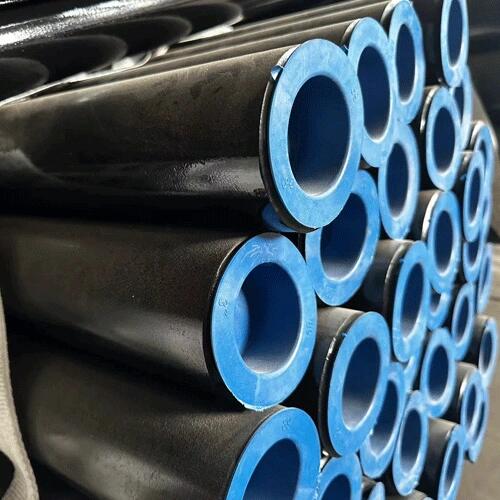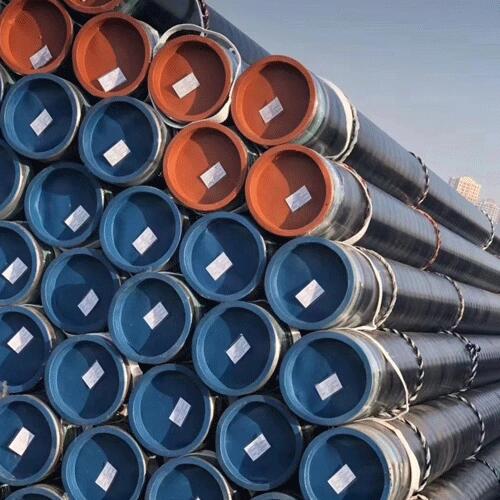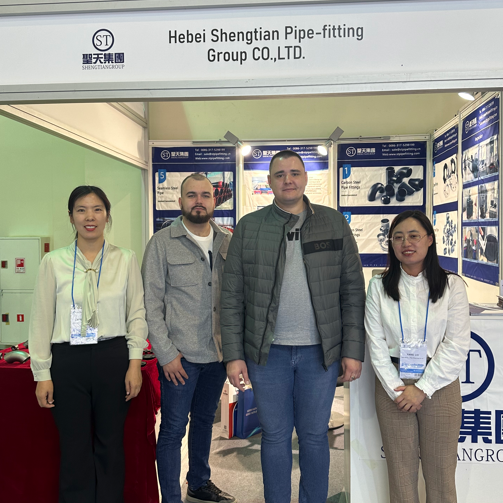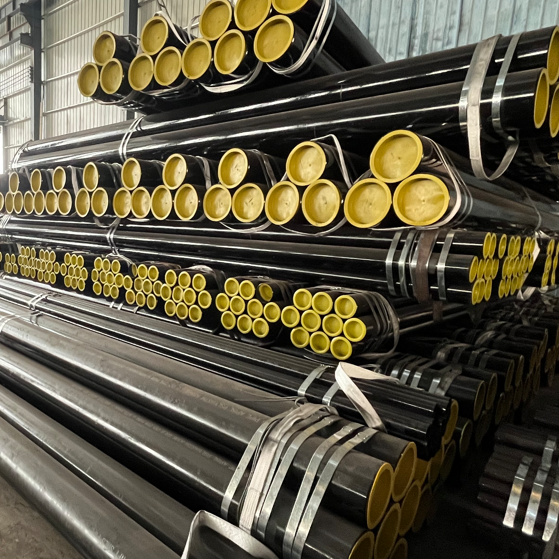Steel pipe factory introduction method for preventing quenching cracks of medium and high carbon low alloy steel pipes.
(A) If the entire steel pipe is cooled to the martensitic transformation stop temperature (Mf point) or lower by strong water quenching, quenching cracks will occur with high probability.
(B) Since the cracks at the time of quenching cracking extend substantially in the axial direction of the steel pipe, it can be considered that the main force for expanding the cracks is the tensile stress in the circumferential direction.
(C) Regarding the source of the aforementioned tensile stress in the circumferential direction, it can be considered that the temperature difference in the wall thickness direction (non-uniform temperature) generated during the cooling process caused the horses on the outer surface side and the inner surface side of the steel pipe. There is a deviation in the timing of the transformation.
(D) Especially in the vicinity of the cooling surface where the temperature unevenness is large (that is, the temperature difference from the inner surface side is large), microcracks due to brittle fracture are likely to occur, which are likely to become the starting point of crack extension.
(E) In most cases, the cracks extend from the end of the steel pipe as a starting point. The reason is considered to be that the stress increase coefficient of the end portion having the free surface is larger than the coefficient other than the end portion.
(F) When the cooling rate is suppressed without water cooling, quenching cracks do not occur in the low-alloy steel containing high carbon and the Cr-based stainless steel. It should be noted that, for low-alloy steel containing high carbon, when mart sensitization is suppressed and the structure is made into a bainite-based structure, quench cracking does not occur. In short, it can be considered that, in most cases, quenching cracks start from the cracks generated at the end of the steel pipe with a free surface. The cracks are generated as a result of the development of microcracks that are caused by cooling. The thermal stress is caused by the uneven temperature in the wall thickness direction and the tensile stress in the circumferential direction (hereinafter also referred to as “stress”) caused by the phase transformation stress act on the cooling Produced near the surface.
(G) Even for steel pipes made of low-alloy steel or medium-alloy steel that are prone to quenching cracks during water quenching, if the end of the steel pipe is not water-cooled, it is possible to ensure sufficient Martensibility in the parts other than the end. If the cooling rate of the volume ratio is water-cooled, water quenching can be performed stably without quenching cracks.
The above-mentioned water quenching method is applied to a steel pipe made of martensitic stainless steel, it is possible to ensure high performance without quenching cracks.
A method for quenching a steel pipe, characterized in that it is a quenching method in which the alloy steel pipes is quenched by water cooling from the outer surface, wherein the pipe end is not water-cooled, but at least a part of the part other than the pipe end is water-cooled.
 Why should Seamless steel pipes be epoxy powder coated?
Why should Seamless steel pipes be epoxy powder coated?
 ASTM A106 Thick-walled steel pipe production steps
ASTM A106 Thick-walled steel pipe production steps
 Shengtian Group successfully participated in the Russian Oil and Gas Exhibition
Shengtian Group successfully participated in the Russian Oil and Gas Exhibition
 Is API 5L Black Steel Pipe Good For Air Lines?
Is API 5L Black Steel Pipe Good For Air Lines?